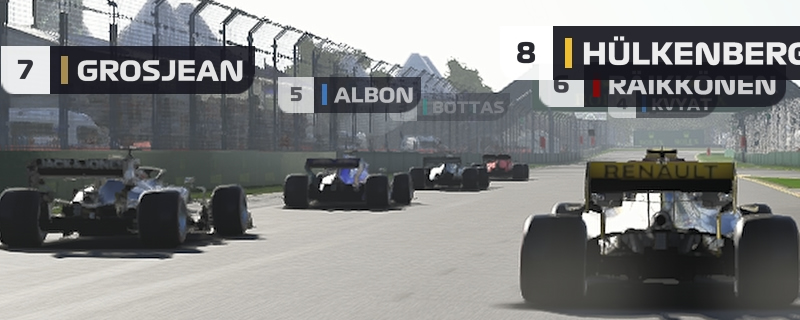F1 2019 – Nvidia DLSS VS AMD FidelityFX
Conclusion
Update –Â Codemasters has confirmed to us that Patch 1.07 for F1 2019 shipped with an incomplete integration of Nvidia’s DLSS technology, which explains the graphical issues which we have experienced within the game.Â
F1 2019’s DLSS support was released prematurely, and Codemasters has confirmed that a corrected implementation of the feature will be added to the game in an upcoming patch. We plan to look into F1 2019’s updated DLSS support when it is officially added to the game. Â
Our original Analysis follows.Â
———————-
So, FidelityFX VS DLSS. Is there a winner here? Yes, and no. Yes, because DLSS presented us with too many graphical issues for us to consider it worth using and no because FidelityFX and DLSS aren’t directly comparable technologies. Radeon wins by default here, as we can see people using FidelityFX in F1 2019, unlike DLSS.Â
One mark in FidelityFX’s favour is that it is a GPU agnostic feature. It isn’t locked behind Radeon hardware, so gamers are free to utilise the function on any graphics card, be it from Radeon or Geforce. That’s the beauty of FidelityFX’s open nature.Â
FidelityFX Sharpening is the star of the show here, as it delivers a clearer image while offering minimal performance downsides. In most of the graphics cards, we tested its performance cost was negligible, making any gain in graphical quality worth it. While the impact of the feature is subtle, it generates enough improvements over F1 2019’s standard visuals to be worth switching on.Â
When thinking about DLSS, the first thing that comes to mind is that Nvidia hasn’t released any information about DLSS coming to the game. This tells us one of three things, that Nvidia is embarrassed by the graphics DLSS offers here, or that they weren’t heavily involved F1 2019’s DLSS support. Alternatively, F1 2019 requires another patch to get the most out of DLSS. As it stands, DLSS isn’t worth using in F1 2019. Just lower your graphics settings in other ways. The performance gains offered by DLSS aren’t worth the performance drops they incur. More information about this is on page 2.Â
Right now, F1 2019 offers some of the worst levels of DLSS support that we have ever seen. Perhaps this will be addressed with a driver update or game update in the future, but as it stands, we recommend that Nvidia RTX users should steer clear from this feature.Â
FidelityFX Upscaling does what it sets out to do. It upscales a lower resolution image to your chosen resolution and attempts to mitigate the shortcomings of standard resolution upscales. It looks alright, but it isn’t that revolutionary. It is enough to get our Radeon RX Vega 56 over 60FPS in this game, but aside from that, it isn’t super impactful.Â
Fidelity FX Sharpening is the star of the show here, as while its impact on screenshots is subtle, those small differences add up to make F1 2019 look much better, even at 4K. FidelityFX Sharpening is a feature that we think is worth turning on, and we look forward to seeing it implemented into more games.
You can join the discussion on F1 2019’s support for both DLSS and FidelityFX on the OC3D Forums. Â



